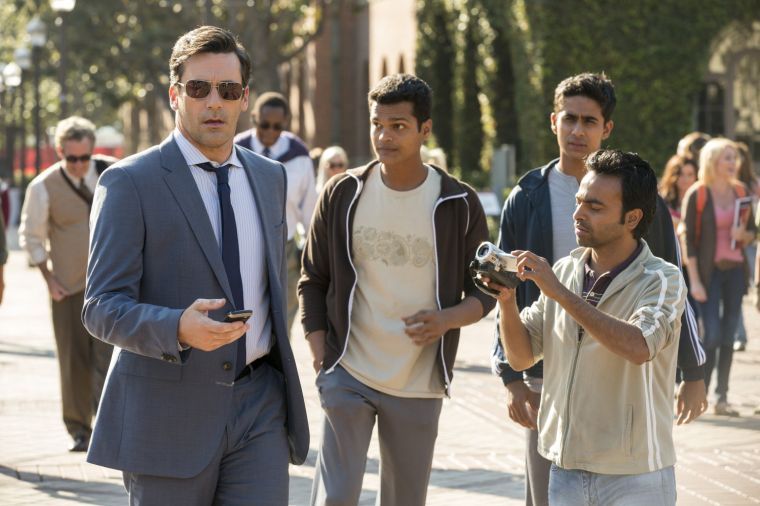‘Million Dollar Arm’: Bernstein’s new approach to MLB starmaking
May 20, 2014
Call it the magic of movies — or, more specifically, Disney movies — but it’s not every day that the self-proclaimed “Least Sexy Man in the World” can co-exist in the same body as one of People Magazine’s “Sexiest Men Alive.”
Disney’s latest live-action feature, “Million Dollar Arm,” manages to make this fantastical scenario a reality by casting Jon Hamm, a repeat “Sexiest Man Alive” finalist, as J.B. Bernstein, who claims to be anything but.
Aside from the less-than-flattering recognition, Bernstein is more commonly known for the reality television contest he started in India called “The Million Dollar Arm.”
Bernstein’s story serves as the basis for Disney’s film, which opened on May 16. It follows his unorthodox idea to find Major League-caliber talent through a 2008 Indian reality TV program, tapping into a region of the world that hardly considered baseball as a viable athletic activity – if they’d even heard of it in the first place.
The show’s two winners, Rinku Singh and Dinesh Patel, signed with the Pittsburgh Pirates organization after winning the competition. Before “The Million Dollar Arm,” Singh and Patel were javelin throwers and, just months after touching a baseball for the first time, they signed with the Pirates.
Though Patel struggled in the major leagues and was released by the Pirates in 2010, Singh remains in the Pirates organization and has been marred by injuries for much of his career, missing two consecutive seasons.
On May 11, Singh, Hamm and Bernstein spoke with reporters on the field at PNC Park about the story behind the film and finding talent in unexpected places. Hamm said the process of adapting a contemporary true story has now become easier than ever before.
“The strangest thing about making a true story that happened in recent history is that everyone has a camera at all times,” Hamm said. “So it’s easy to find material [when preparing for the role].”
Hamm also spoke about the untapped well of baseball talent that India’s massive population could provide, thanks largely in part to Bernstein’s breakthrough.
“There’s over a billion people in India. There’s going to be more and more guys coming over that are going to have this experience,” Hamm said.
Bernstein echoed many of Hamm’s sentiments and explained how the “Million Dollar Arm” method of finding players is preferable to the forced globalization of a sport.
“It’s a smarter way to develop the game than it is to just go into India and force schools to carry baseball as a sport when there’s no kid out there raising his hand saying, ‘I want to play baseball, basketball or football,’” Bernstein said.
The disinterest in baseball in India shouldn’t be viewed as a rejection of the sport, Bernstein said, but more as a lack of exposure. Bernstein drew an analogy to basketball and contemplated what would have happened if basketball had not taken hold in the United States.
“Michael Jordan would have no idea that it’d be a good skill to be able to throw the ball in the hoop,” Bernstein said. “He would have no idea that was worthwhile because you can’t monetize it — there’s no pro sport.”
Given the burgeoning population of young males in India, Bernstein said recruiting there is a logical and vital next step for finding future Major League stars.
“There’s 200 million men between the ages of 15 and 25 — I don’t really know what else to say,” Bernstein said. “You’ve got tons of people walking around there who might be like Roger Clemens and don’t even know.”
Rob Ruck, a professor in Pitt’s History Department and writer of the book “Raceball: How the Major Leagues Colonized the Black and Latin Game,” also acknowledges the appeal of pitching baseball to populous Asian countries, despite the challenges associated with globalization.
“Major League Baseball would love to follow in the footsteps of the NBA and, to a lesser degree, the NHL and globalize,” said Ruck. “What they’re finding is it’s a lot harder to do with sports that don’t have a long heritage of grassroots participation.”
A country like India — with a vast majority of its athletic focus shifted to cricket — couldn’t be further from this grassroots heritage. Ruck said he imagines that an Indian baseball star in the vein of Yao Ming, a successful example of converting Asian talent into an NBA household name, might result in millions of new followers for the MLB and, consequently, a whole lot of money. But since there’s no real history or precedent established for an Indian baseball superstar, he doesn’t have his hopes up.
“So ‘The Million Dollar Arm’ could be the billion dollar shot in revenues for MLB,” Ruck said. “Now, that’s a real long shot.”



